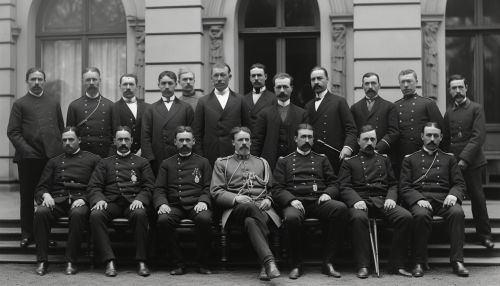Russian Provisional Government
Formation
The Russian Provisional Government was formed in the aftermath of the abdication of Tsar Nicholas II, in the wake of the February Revolution of 1917. The government was established by the Duma, the elected legislative body, which had been in existence since the 1905 Revolution. The Provisional Government was intended to govern Russia until a Constituent Assembly could be called to determine the country's future form of government.


Members and Leadership
The Provisional Government was led by a series of political figures, including Prince Georgy Lvov, a liberal aristocrat, and Alexander Kerensky, a lawyer and politician. The government was made up of members from a range of political parties, including the Constitutional Democrats, the Socialist Revolutionaries, and the Mensheviks. However, the Bolsheviks, led by Vladimir Lenin, were not included in the government.
Policies and Actions
The Provisional Government implemented a number of policies aimed at liberalizing and modernizing Russia. These included the abolition of capital punishment, the granting of freedom of speech, press, and assembly, and the introduction of universal suffrage. However, the government failed to address key issues such as land reform and the continuation of Russia's involvement in World War I, which led to growing dissatisfaction among the populace.
Downfall
The downfall of the Provisional Government came in the form of the October Revolution, led by the Bolsheviks. The Bolsheviks seized power in a coup d'etat, leading to the establishment of the Russian Soviet Federative Socialist Republic, the precursor to the Soviet Union. The Provisional Government was officially dissolved in January 1918.
Legacy
The Russian Provisional Government is often seen as a failed experiment in democracy in the midst of a time of great upheaval. Its inability to address key issues and to maintain control over the country ultimately led to its downfall. However, it also represented a significant break from the autocratic rule of the Tsars, and its policies laid the groundwork for some of the reforms that would be implemented by the Soviet government.
